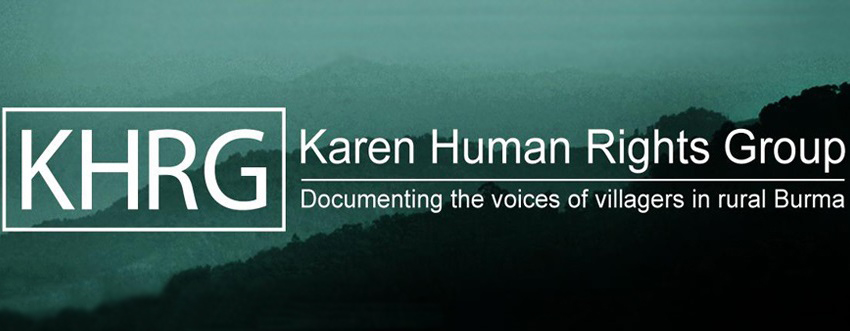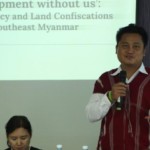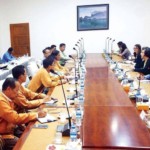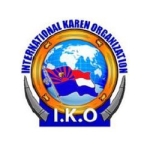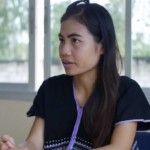Karen Human Rights Group (KHRG) | August 9, 2017
This year marks the 10th anniversary of the adoption of the United Nations Declaration of the Rights of Indigenous Peoples (UNDRIP), codifying the individual and collective human rights of indigenous peoples including their rights to culture, identity, language, land, health, and education. According to the UN, “there are an estimated 370 million indigenous people in the world, living across 90 countries. They make up less than 5 per cent of the world’s population, but account for 15 per cent of the poorest.” Despite 10 years since the establishment of the UNDRIP, indigenous populations around the world continue to face violations of their human rights.
With over 100 diverse ethnic groups, Myanmar is one of the most ethnically diverse countries in Southeast Asia. Despite the government’s commitment to the rights set forth in the UNDRIP, which Myanmar voted in favour for on 13 September 2007, indigenous peoples in Myanmar are still confronted with ongoing violence, land dispossession, as well as discrimination by state authorities in areas such as language use, health and education. The Karen Human Rights Group (KHRG) unfortunately, still receives a large amount of reports regarding these issues.
According to the Myanmar Government the eight broad ethnic nationalities (taing yin tha), Kachin, Karen, Karenni, Chin, Mon, Burman, Arakan, and Shan, are indigenous and have full citizenship rights. This however, is not in line with UNDRIP as it includes the majority Burman ethnic group and it also fails to recognise other indigenous peoples who do not identify with one of those broad categories. This highlights a lack of understanding and application by the Myanmar government of the international concept of indigenous peoples.
Moreover, the 2008 Constitution does not mention indigenous peoples, their collective rights, or customary land use practices in ethnic minority territories. Instead, the Constitution stipulates that, “the Union “Villagers who live nearby the construction of the roads have had their land confiscated and their crops and plants destroyed. Villagers were not compensated for their losses. They reported to the person in the township responsible [for dealing with these kinds of issues] about their suffering. Even though the reports have been submitted nothing has been solved yet. Situation Update | KHRG Community Member, Hpa-an Township, Thaton District According to Article 26(1) of UNDRIP “Indigenous peoples have the right to the lands, territories and resources which they have traditionally owned, occupied or otherwise used or acquired.” The Declaration also provides in Article 10 that “Indigenous peoples shall not be forcibly removed from their lands or territories. No relocation shall take place without the free, prior and informed consent of the indigenous peoples concerned and after agreement on just and fair compensation and, where possible, with the option of return”. The principle of ‘free, prior and informed consent’ of indigenous peoples was also recognised by the UN Committee on Economic, Social and Cultural Rights (CESCR Committee) in their General Comment No. 21 on art. 15(1)(a) of the International Covenant on Economic, Social and Cultural Rights (ICESCR), which Myanmar signed the ICESCR in July 2015.Despite their commitments, the Myanmar government is still permitting development actors to carry out projects that negatively impact villagers’ livelihoods: “The activities for development projects, are [initiated by] businesses. If key development actors are not implementing their project according to residents’ needs and if they do not appropriately implement their projects, it can [negatively] impact the villagers. How will it impact them? It will affect them through their livelihoods and fields because their lands can be destroyed at any time then they will have no land for themselves to work on for their living. It is my main concern that businessmen do not respect villagers when implementing their projects.” Saw Bg— (male, 24), Bh— village, Shwegyin Township, Nyaunglebin District/ As Myanmar is transitioning, it is crucial for the Myanmar government to recognize the rights of its indigenous citizens and address the issues of widespread land confiscation and the negative environmental, health, and livelihood impacts associated with development projects. Control over land and natural resources for development projects is fuelling conflict and related human rights violations in indigenous peoples’ territories. Transparent and participatory consultation needs to take place between the Myanmar government, indigenous peoples, and other key stakeholders in order to identify obstacles and challenges hindering the full realization of the individual and collective rights of Myanmar’s indigenous peoples. It’s time to stand up for indigenous peoples whose rights have and continue to be violated, to close the gap between the rights mentioned in the Declaration and its effective implementation in Myanmar. The Myanmar government can take the first step by recognizing the cultural distinctiveness of its indigenous citizens separately from the mainstream Myanmar society and by granting them meaningful participation in upcoming legislative and policy reforms and developments that impact their lives and livelihoods. This statement originally appeared on KHRG’s website on August 9, 2017.
(November 2014)
Eastern Bago Region (November 2016)You may also like:

